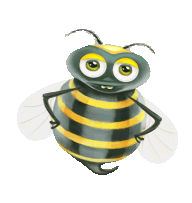Who are some of my common pals who can cause anaphylaxis?
Peanuts, Bee Stings, Shellfish, Medications, Dairy, Latex, and more...





Common causes
People at risk for a severe allergic reaction may have one or more triggers. Do you know what your trigger is?
Here are some of the “what-ifs” that can cause or trigger life-threatening allergic reactions (anaphylaxis), including foods, medicines, stinging and biting insects, allergy injections, exercise, and other unknown causes:
Foods
Such as peanuts, tree nuts, fish, shellfish, milk, eggs, sesame, and food additives
Insect stings
Often associated with bees, hornets, wasps, and ants, as well as bites from insects such as flies, mosquitoes, ticks, and caterpillars
Medicines
Such as penicillin, aspirin, and nonsteroidal anti-inflammatory drugs (NSAIDs)
Latex rubber
Such as that found in latex gloves and some medical and dental equipment as well as common household products
Exercise related
Often overlooked. Sometimes associated with other factors that include aspirin, NSAIDs, or food ingestion before or after exercise
This information is not a substitute for professional medical advice, diagnosis, or treatment. We strongly encourage you to seek the advice of your healthcare provider with any questions regarding your medical condition.
- These are not all causes of anaphylaxis. Please check the Patient Information Leaflet or ask your healthcare provider for more information.
Common Causes of Anaphylaxis
People at risk for a severe allergic reaction may have one or more triggers. Do you know what your trigger is?
Foods
Such as peanuts, tree nuts, fish, shellfish, milk, eggs, sesame, and food additives
Insect stings
Often associated with bees, hornets, wasps, and ants, as well as bites from insects such as flies, mosquitoes, ticks, and caterpillars
Medicines
Such as penicillin, aspirin, and nonsteroidal anti-inflammatory drugs (NSAIDs)
Latex rubber
Such as that found in latex gloves and some medical and dental equipment as well as common household products
Exercise related
Often overlooked. Sometimes associated with other factors that include aspirin, NSAIDs, or food ingestion before or after exercise
These are just some of the causes of anaphylaxis. Please check the patient information leaflet or ask your healthcare provider for more information.
This information is not a substitute for professional medical advice, diagnosis, or treatment. We strongly encourage you to seek the advice of your healthcare provider with any questions regarding your medical condition.
- These are not all causes of anaphylaxis. Please see hcp for more info.
IMPORTANT SAFETY INFORMATION
Epinephrine injection, USP auto-injector is intended for immediate administration as emergency supportive
therapy and is not intended as a substitute for immediate medical care. In conjunction with the administration of
epinephrine, the patient should seek immediate medical or hospital care. More than two sequential doses of
epinephrine should only be administered under direct medical supervision.
Epinephrine injection, USP auto-injector should ONLY be injected into the anterolateral aspect of the thigh. Do not
inject intravenously. Do not inject into buttock. Do not inject into fingers, hands or feet. Instruct caregivers to
hold the child’s leg firmly in place and limit movement prior to and during injection to minimize the risk of injection
related injury.
Epinephrine should be administered with caution to patients who have heart disease, including patients with
cardiac arrhythmias, coronary artery or organic heart disease, or hypertension. In such patients, or in patients who
are on drugs that may sensitize the heart to arrhythmias, epinephrine may precipitate or aggravate angina pectoris
as well as produce ventricular arrhythmias. Arrhythmias, including fatal ventricular fibrillation, have been reported
in patients with underlying cardiac disease or those receiving certain drugs. Patients who receive epinephrine
while concomitantly taking cardiac glycosides, diuretics or anti-arrhythmics should be observed carefully for the
development of cardiac arrhythmias. Epinephrine should be administered with caution to patients with
hyperthyroidism, diabetes, elderly individuals, and pregnant women. Patients with Parkinson’s disease may notice
a temporary worsening of symptoms.
Rare cases of serious skin and soft tissue infections, including necrotizing fasciitis and myonecrosis caused by
Clostridia, have been reported at the injection site following epinephrine injection for anaphylaxis. Advise patients
to seek medical care if they develop signs or symptoms of infection.
IMPORTANT SAFETY INFORMATION
What is the most important information I should know about epinephrine injection, USP auto-injector?
- Epinephrine injection, USP auto-injector contains epinephrine, a medicine used to treat allergic emergencies (anaphylaxis). Anaphylaxis can be life-threatening, can happen within minutes, and can be caused by stinging and biting insects, allergy injections, foods, medicines, exercise or other unknown causes. Symptoms of anaphylaxis may include:
- trouble breathing
- wheezing
- hoarseness (changes in the way your voice sounds)
- hives (raised reddened rash that may itch)
- severe itching
- swelling of your face, lips, mouth, or tongue
- skin rash, redness, or swelling
- fast heartbeat
- weak pulse
- feeling very anxious
- confusion
- stomach pain
- losing control of urine or bowel movements (incontinence)
- diarrhea or stomach cramps
- dizziness, fainting, or “passing out” (unconsciousness).
